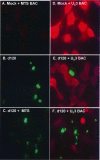In transduced cells, the US3 protein kinase of herpes simplex virus 1 precludes activation and induction of apoptosis by transfected procaspase 3
- PMID: 17634220
- PMCID: PMC2045497
- DOI: 10.1128/JVI.00820-07
In transduced cells, the US3 protein kinase of herpes simplex virus 1 precludes activation and induction of apoptosis by transfected procaspase 3
Abstract
The US3 protein kinase of herpes simplex virus 1 blocks apoptosis induced by replication-incompetent virus mutants, proapoptotic members of the Bcl-2 family of proteins, and by a variety of other agents that act at the premitochondrial level in the proapoptotic cascade. To define the role of US3 in blocking apoptosis at the postmitochondrial level, we investigated the US3 protein kinase in transduced cells that were either transfected with a plasmid encoding procaspase 3 or superinfected with a proapoptotic mutant virus lacking the gene encoding the infected cell protein no. 4. (i) We show that US3 blocks the proteolytic cleavage that generates active caspase 3 from the transfected zymogen procaspase 3, concomitant with inhibition of apoptosis. (ii) Studies based on detection of fluorescence emitted upon cleavage of a synthetic caspase 3 substrate showed that expression of the US3 kinase and appearance of the cleaved substrate were mutually exclusive. (iii) An affinity-purified glutathione S-transferase (GST)-US3 fusion protein, but not the inactive GST-US3(K220N) protein, phosphorylated procaspase 3 in vitro. The studies published earlier on the effect of US3 on the upstream regulatory proteins and current studies suggest that the US3 protein kinase may act on several proteins in the proapoptotic cascade to enable the virus to complete its replication.
Figures




References
Publication types
MeSH terms
Substances
Grants and funding
LinkOut - more resources
Full Text Sources
Research Materials

